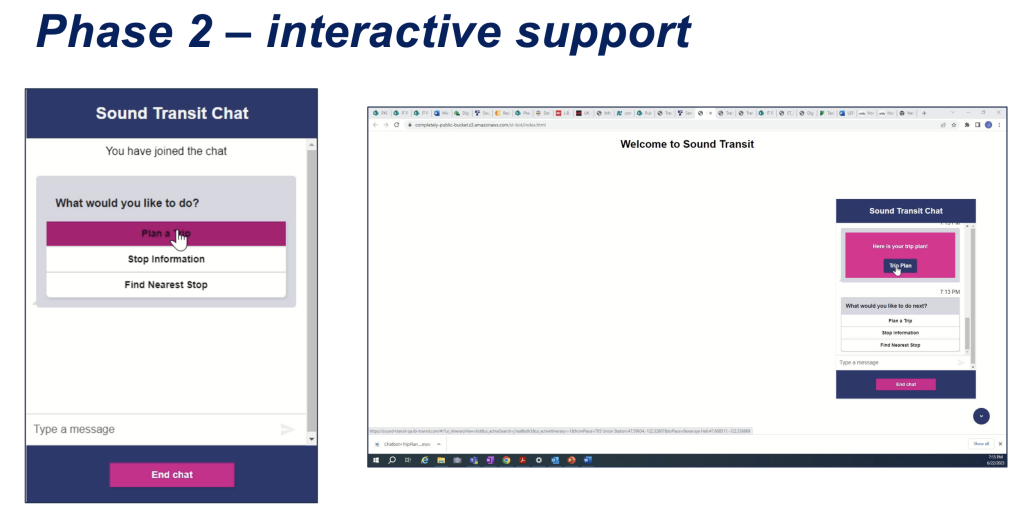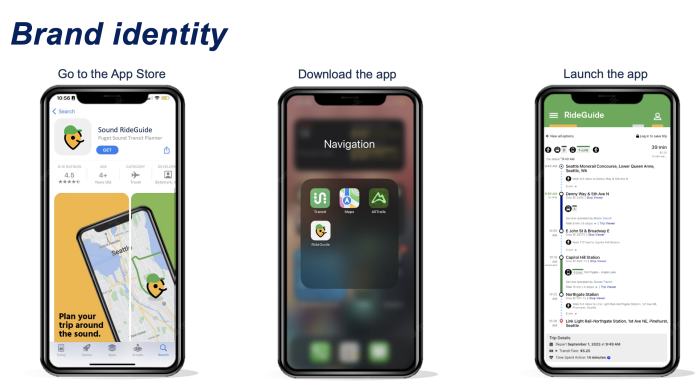
Sound Transit plans to deliver the first phases of two passenger-facing technologies late this fall. A new digital assistant tool will launch on mobile and web apps to provide users access to regional trip planning and service alerts. The agency will also be launching a pilot accessible wayfinding tool to navigate stations.
On Thursday, Sound Transit staff updated the agency’s Rider Experience and Operations (REO) Committee on the latest details of the evolving passenger-facing technologies, nearly a year after announcing the work.
Marie Olson, head of the rider experience and innovation teams, explained how the digital assistant tools, dubbed “Sound RideGuide,” are different from popular third-party transit apps like Google Maps.
“Third-party applications are not fully accessible for passengers who use screen reading technology,” Olson said. “Commercial providers may not include landmarks or stop identifications that transit passengers use. Third parties don’t offer interactive support and direct communication or connection through passenger care.”
Olson further contrasted future digital assistant features from third-party apps by noting that third-party apps don’t integrate with the ORCA payment system or provide in-station walking or rolling instructions.
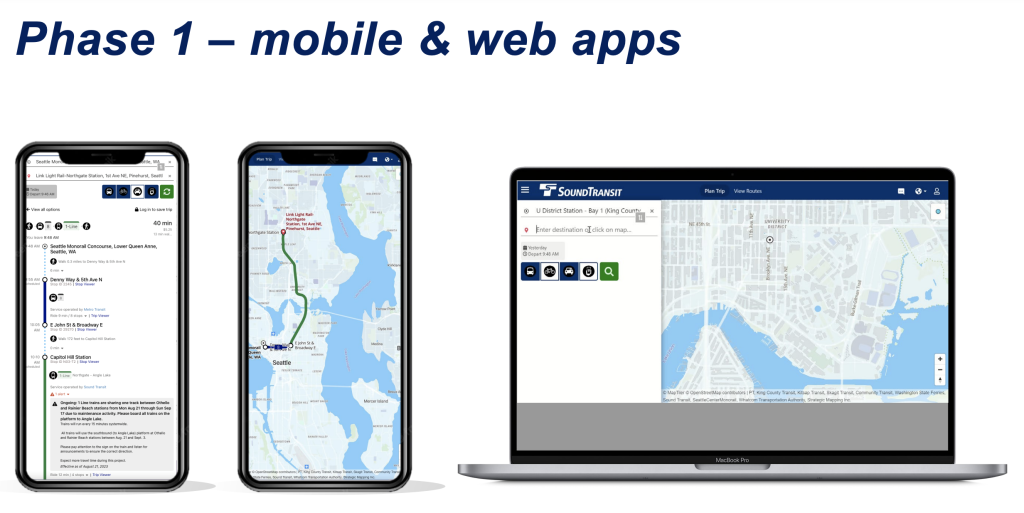
Whether by mobile or web app, users of Sound RideGuide will be able to establish a profile, set personal preferences, get push notifications for alerts, and do detailed regional trip planning. The trip planner will provide trip options and step-by-step journey information, such as transit travel times, walk or bike travel times, and fare costs. Users will also be able to visualize their journeys with a travel map.
Sound Transit still needs to complete user testing to soft launch the first phase of the digital assistant tool, but if all goes according to plan the web app will debut on November 28 followed by the mobile apps (iOS and Android) on December 18.
The next build out phase of the digital assistant tool will be centered on interactive support features via chatbot.
“The chatbot has three primary components: the trip planning and information component that are fed from the open trip planner, frequently asked questions and a knowledge base, which includes answers to questions about lost and found, service animals, and ORCA, and then an interactive support so you can live chat with passenger care staff,” Olson said. Those features are expected to roll out in the spring.
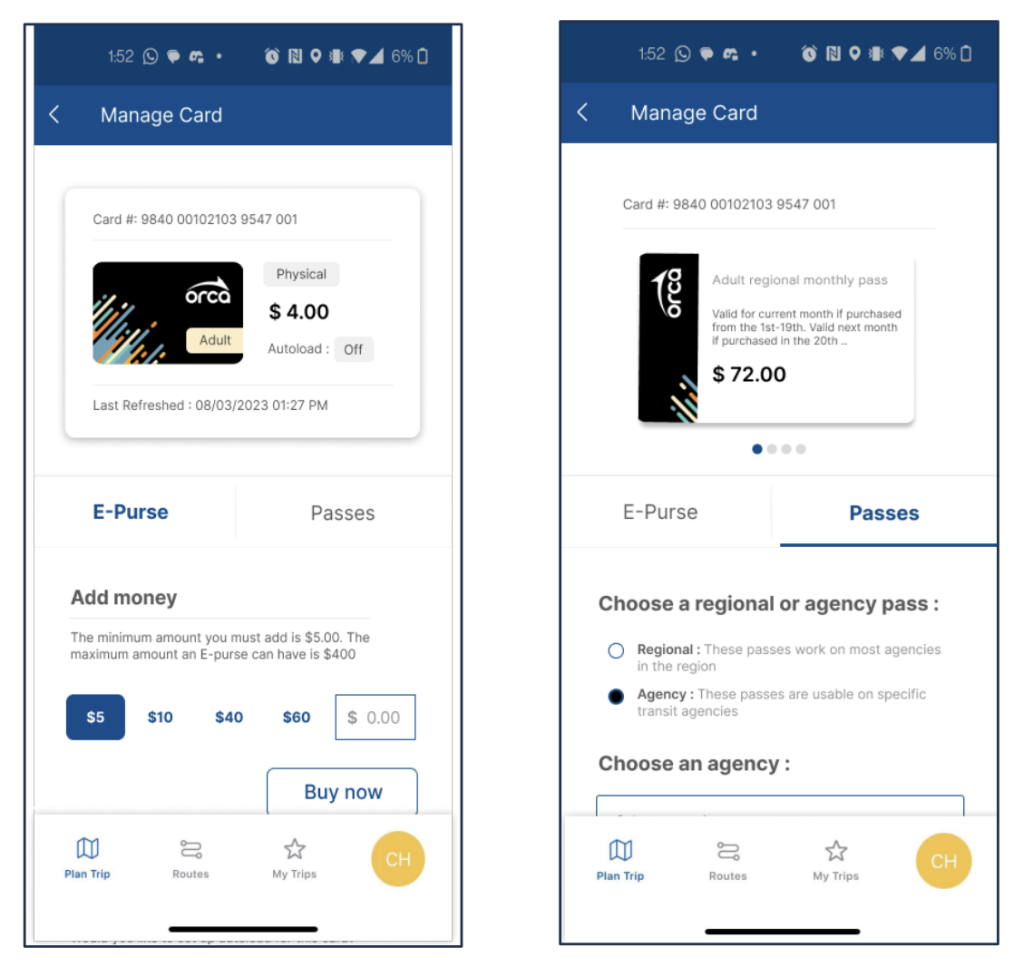
A third phase of the digital assistant tool will bring digital fare payment integration with ORCA, the region’s stored-value fare payment system for public transit.
“This summer’s user experience intern conducted extensive user experience research on fare payment integration,” Olson said. “We surveyed and interviewed passengers on design screens for what the integration could look like.” A mockup shared with the committee showed digital e-purse and e-passes that users could purchase for journeys. Adding money to the e-purse or purchasing regional or agency e-passes to a digital ORCA card could be as easy as a few taps using the apps.
The timing on roll out of the digital fare payment features isn’t exactly set in stone. Olson said that it would hopefully launch by mid-2025, but that could change since the features are dependent upon INIT, the ORCA system vendor, and prioritization by the ORCA Joint Board.
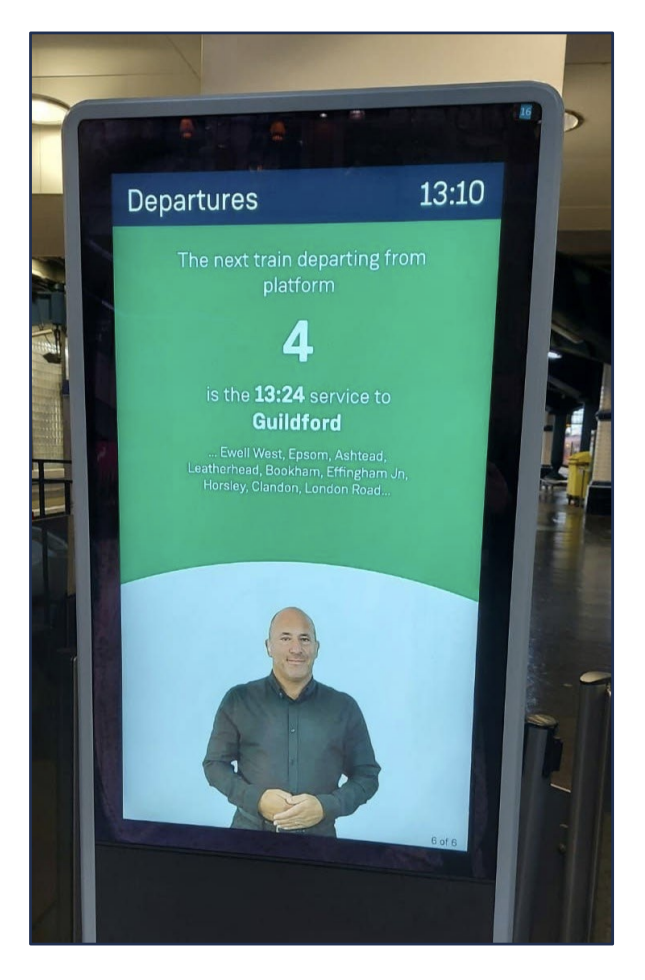
A fourth phase of the digital assistant tool is further on the horizon. Sound Transit is contemplating deployment of a suite of additional features as well as interactive, touchscreen kiosks at stations. Sound RideGuide users will see single sign-on and dynamic rerouting enhancements in this phase. The dynamic rerouting feature would be able to immediately provide better options in the event of a service disruption. The agency is also considering sign language avatars for people who use sign languages as well as real-time updates on escalators and elevators.
Underpinning all of this, Sound Transit is programming Sound RideGuide to support many languages and use high quality open data for trip planning. The agency has tested language functionality with numerous groups and is ensuring that tools comply with Title VI of the Civil Rights Act. As for data quality, Sound Transit is collaborating with regional transit partners to improve data accuracy and align data approaches to better serve riders. That will not only help Sound Transit in this endeavor but allow partner agencies to pull regional data into their own branded trip planners.
The accessible wayfinding tool, a related project to the digital assistant, is well into development and will provide for detailed directions within Link station.
“Our vendor, GoodMaps, provides a mobile app that allows passengers to navigate stations in real-time with step-by-step directions, presently visually, audio, or haptic signals,” Olson said. “This includes stop locations and amenities, such as our ticket vending machines, ORCA readers, and vertical conveyances, and allows passengers to select an accessible path that matches their mobility needs.”
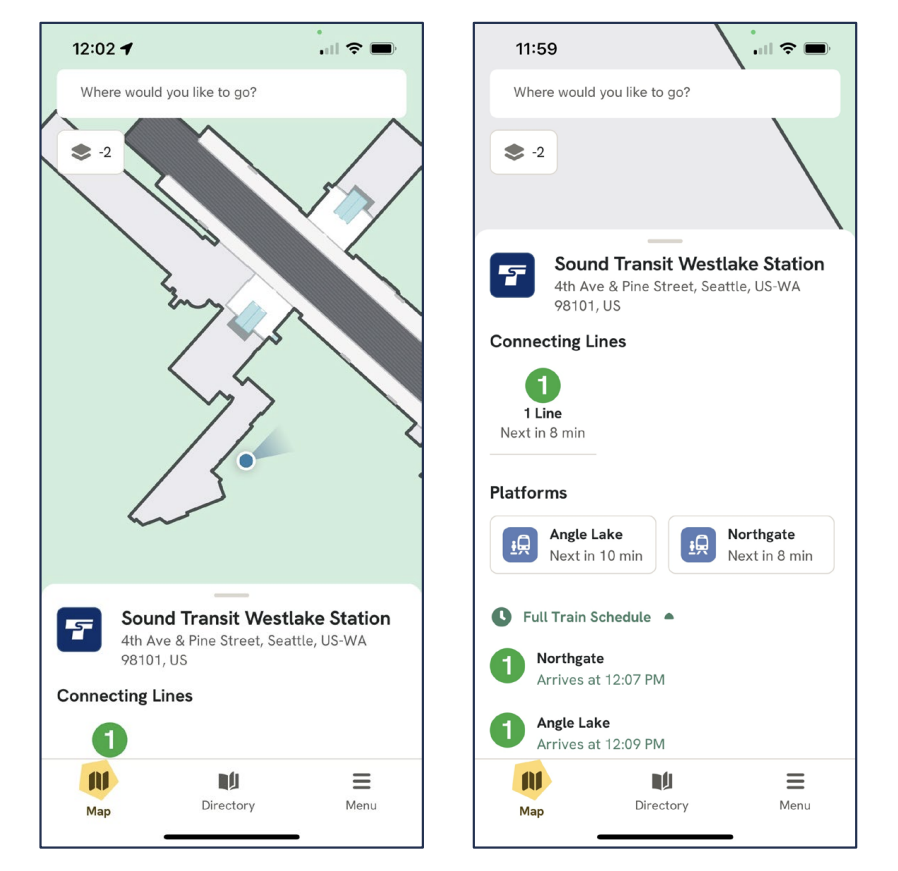
But the accessible wayfinding tool will be able to do even more in helping riders board trains reliably, Olson explained.
“GoodMaps was contracted to provide customizations that enable a passenger who is deaf or blind to distinguish which train is pulling up in front of them and at which platform,” Olson said. “It communicates real-time arrival information, including route direction of travel and the time that trains are to arrive.”
The first phase of the accessible wayfinding tool is set to be launched as a pilot on December 6, but again, this is dependent upon successful user testing in the next month or so. In the first phase, the pilot will be limited to the International District/Chinatown and Westlake stations that have been mapped.
An expanded pilot could follow in the next phase to cover all Link stations, provided the first phase is successful. Eventually the accessible wayfinding tool could graduate to a full systemwide tool to include Sounder stations and ST Express bus facilities, Olson said.
In a separate project, Sound Transit is working to install a new system to track station elevator and elevator outages in real-time and communicate them to the public. The project team did not say how this system would integrate with the passenger-facing projects, but it could prove to be very useful information for disabled riders who rely on elevators to navigate the station. The agency has also boosted its elevator and escalator maintenance budget, but outages do remain fairly common even as they’ve improved from pandemic lows.
Stephen is a professional urban planner in Puget Sound with a passion for sustainable, livable, and diverse cities. He is especially interested in how policies, regulations, and programs can promote positive outcomes for communities. With stints in great cities like Bellingham and Cork, Stephen currently lives in Seattle. He primarily covers land use and transportation issues and has been with The Urbanist since 2014.

